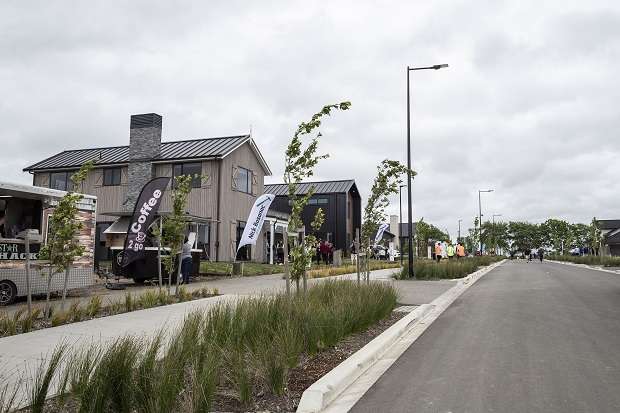Aucklanders all know that Hobsonville Point is the poster child for great subdivisions, with its mix of housing types, pedestrian-friendly streets, parks, transport links and amenities.
But if you’ve missed out on that, or it’s not your part of town, how can you find the next hot new suburb?
First clue: it’s not just about boxes plunked on a paddock with a few winding bits of tar seal. Or fancy gates and pretty names.
Lisa Dunshea has seen more than a few subdivisions in her time. As review manager for the Auckland Council urban design panel, her job is to make sure that the city gets the good quality compact urban form it needs to accommodate its growth.
Start your property search
The panel is particularly focused on building strong urban centres and neighbourhoods, with an emphasis on the public spaces, reviewing projects with developers early on in the design process to help identify areas for improvement. Their job is to help fit individual development schemes in the bigger picture of creating a well-designed city.
“The larger subdivisions have a master plan approach, and definitely central to that is a vision – what they want the development to be, the sense of place in the area they’re in.”

The new subdivision at Paerata Rise will have schools, sports fields and eventually a train station. Photo / supplied
While newer subdivisions on the edge of town might be gifted with natural features like streams or bush or coast, even small suburban developments can draw on local context that belongs to the area. Known as ‘brownfields’ in urban design lingo because they’re re-building on existing land or suburban pockets, not empty green paddocks, these places can create great places too with the help of smart urban design and master planning.
“Smaller infill subdivisions, say 20 infill terraces or walk up apartments, people are drawn to the location,” Dunshea says. “You’d be close to public transport, so it’s easy to get to work, there are existing parks and sports facilities.”
While provision of schools comes under the Ministry of Education, not Council, Dunshea points to successful examples of new subdivisions where community and education facilities are included in the plans. As the city’s thrust moves towards denser housing types, the panel actively works with Housing New Zealand for housing typologies like three story walk up apartments or terraced town houses.
Dunshea is a fan of new subdivisions, living in one herself when she emigrated to New Zealand.
“One of the key benefits of a subdivision is well-planned streets, laid out well with houses that have a really good relationship to the street.
“And you know that your neighbourhood will be like this for 70 years. While it’s fresh and new now, it has great potential to be a really good place. You know you’ll be getting a good, safe, warm home too.”
Most subdivisions have multiple building companies selling houses to suit different customer tastes and budgets. But the master plan should guide things like where the building platforms and massing (that’s the shape and size) are located in relation to each other and the street, to provide that magic mix of privacy, but community connection.
The design panel's guide asks for plans with strong and coherent identities, to create are places that people want to live and work in, and that people choose to visit. Its not just a single point in time, as the panel also asks developers to show how their developments evolve over time to contribute to how residents and visitors experience the place.
Dunshea’s advice to buyers of new homes, or home and land packages in subdivisions, ask
Is there a bus or train stop nearby, or good public transport links to work and community facilities?
Is there a design code for the homes (Dunshea says that that gives a good sense of the subdivision getting the basics right)? This includes things like pleasing set back from the street, trees and greenery incorporated into the plan, homes with windows and yards that interact with the street so you get to know your neighbours.
If the subdivision is already occupied, are people out in the streets walking and interacting with each other? Is there a mix of people out and about?
Is there good access to schools, jobs, grocery stores, parks or just places to meet up informally?
The Auckland Council's design manual is clear that the design of roads, paths, lanes and links – the movement network – is one of the most important tools to create vibrant, safe and prosperous places. Does the new neighbourhood just have plain roads, or are there interesting walkways for pedestrians or cyclists and connectivity around the place? Is that balanced with safety and privacy?
But Dunshea admits that her teenagers taught her, an urban design professional, that the key thing of a new neighbourhood is sociability.
“Teenagers like to be popular, so to them it wasn’t about safe or attractive streets. It was about how often the doorbell rang.
“Our suburb allowed them to be really accessible, all the kids saying to each other ‘hey let’s go to the park’.
“That can all help you to decide on location.”















